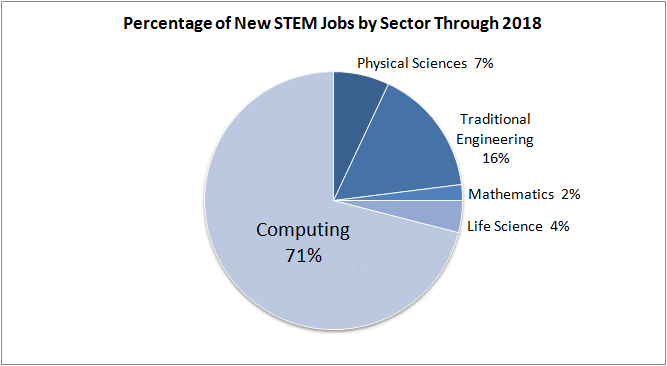If you have been to an educational technology conference in the last 5 years, you have seen more and more emphasis placed on coding and robotics with robots making an appearance in conference sessions, at after hour gatherings, and certainly in the vendor hall. This is simply a reflection of what is happening in the private sector.
In 2015, it was reported that there was $71 billion spent globally on robotic applications, a figure that is expected to more than double by 2019. Europe is already adjusting its curriculum to include robots both as a teaching tools and as a technology for students to study, but why?
By 2018, it is estimated that 71 percent of new STEM positions will be related to computing; it is apparent that computer science is the future of the job market.

According to a Gallup survey, one-half of K-12 principals say that computer science is taught at their school, but upon evaluation of the courses, only one-half of those courses include programming and coding. There are already more job openings than there are qualified people to fill the positions. If we continue to neglect teaching computer science, it is projected that in the next decade there will be about 1 million more U.S. jobs in the tech sector than computer science graduates to fill them.
For the opportunity to have future financial stability alone, students should have the opportunity to learn principles of computer science early. Couple that with Code.org’s assertion that programming fosters critical thinking, logic, persistence, and creativity which helps students excel at problem-solving in all subject areas and you have a case for coding in the classroom.
So, how is coding included in the traditional school day? At some schools, programming and coding is taught through technology classes, but this is not always the case. Coding and robotics can be incorporated into content areas quite easily from sequencing activities in ELA and social studies to writing algorithms in math class as in this ClassFlow lesson, it is possible to use robots to identify misconceptions and enhance understanding as students apply subject-specific knowledge through authentic tasks.
As you can see, the benefits of coding and programming are significant, and they can be integrated into schools easily. Including coding in curriculum will help give students the real-world skills they will need to thrive in the future.
- High school students say AI will change the workforce - April 18, 2024
- Motivating students using the Self-Determination Theory - April 17, 2024
- Michigan Virtual’s statewide workgroup releasing AI guidance for K-12 educators - April 17, 2024


